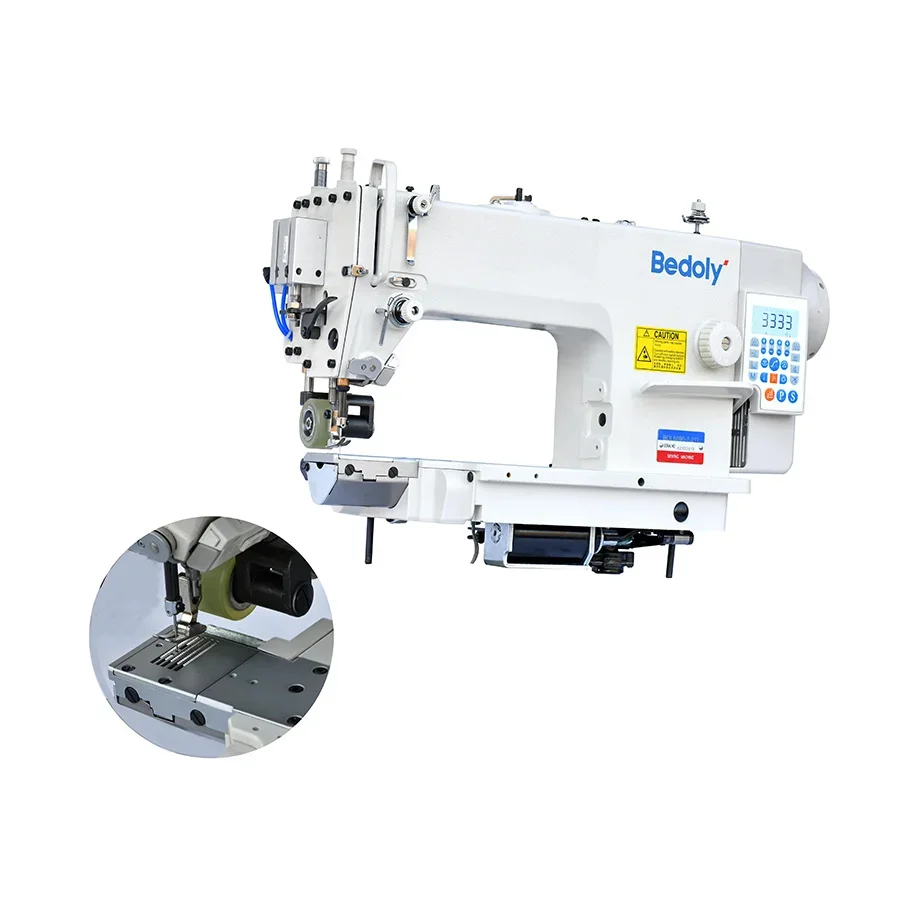Advantages of Computer-Controlled Sewing Machines: Efficiency and Precision in Textile Production
The textile industry has undergone significant transformations over the years, with technology playing a pivotal role in enhancing production processes. Among the most notable advancements are computer-controlled sewing machines, which have revolutionized how textiles are produced. These machines offer numerous advantages, particularly in terms of efficiency and precision, making them indispensable tools in modern textile manufacturing.
Enhanced Efficiency
Automated Processes
Computer-controlled sewing machines are designed to automate various sewing tasks that were traditionally performed manually. This automation reduces the time required for setup and operation, allowing for quicker production cycles. For instance, features such as automatic thread cutting, needle positioning, and stitch selection streamline workflows and minimize downtime between tasks.
Speed and Consistency
These machines operate at significantly higher speeds than their mechanical counterparts. The ability to maintain consistent stitch quality at high speeds ensures that production rates can be maximized without compromising on quality. This is particularly important in large-scale operations where meeting tight deadlines is crucial.
Memory Functions
Many computerized sewing machines come equipped with memory functions that allow users to save custom settings for different projects. This feature not only saves time but also enhances productivity by enabling quick access to frequently used configurations.

Precision in Stitching
Accurate Stitching
One of the standout features of computer-controlled sewing machines is their ability to produce precise and consistent stitches. The computerized system ensures that every stitch is uniform, which is critical in applications where accuracy is paramount, such as garment manufacturing and intricate embroidery work.
Automatic Tension Adjustment
Computerized machines automatically adjust thread tension based on fabric thickness and stitch type, eliminating the guesswork involved in manual adjustments. This results in better stitch quality and reduces the likelihood of errors, contributing to a more polished final product.
Versatility and Creativity
Variety of Stitches
Computer-controlled sewing machines typically offer a vast array of built-in stitches—ranging from basic straight stitches to complex decorative patterns and embroidery designs. This versatility allows textile producers to experiment with different styles and techniques without needing multiple machines.
Customization Options
Users can often customize stitch settings, creating unique patterns tailored to specific projects. This feature not only enhances creativity but also allows for greater personalization in textile products, catering to diverse consumer preferences.

User-Friendly Interface
Intuitive Controls
Modern computerized sewing machines often come with user-friendly interfaces, including LCD displays that simplify the selection of stitches and settings. This ease of use makes them accessible even to beginners who may find mechanical machines daunting due to their complexity.
Learning Curve
While there may be an initial learning curve associated with operating computerized machines, many manufacturers provide comprehensive tutorials and support resources. As users become familiar with the technology, they often find that the benefits far outweigh any challenges faced during the transition from mechanical to computerized systems.
Environmental Considerations
Clean Operation
Computer-controlled sewing machines are designed with environmental considerations in mind. Many models operate without the need for oiling around critical areas, resulting in cleaner sewing processes that minimize mess and pollution during production.

Conclusion
In summary, computer-controlled sewing machines represent a significant advancement in textile production technology. Their ability to enhance efficiency through automation, ensure precision with accurate stitching, provide versatility with a wide range of functions, and offer user-friendly interfaces makes them essential tools for modern textile manufacturers.
As companies like Sanhexin Automation Co., Ltd. continue to innovate in this field, the future of textile production looks promising—characterized by increased productivity, improved quality, and greater creative possibilities for designers and manufacturers alike. Embracing these technologies not only meets current market demands but also positions businesses at the forefront of industry advancements.
In an era where efficiency and precision are paramount, investing in computer-controlled sewing machines is not just a choice; it is a strategic decision that can lead to sustainable growth and success in the competitive textile market.
Troubleshooting Common Issues with Cylinder Bed Computer-Controlled Sewing Machines



